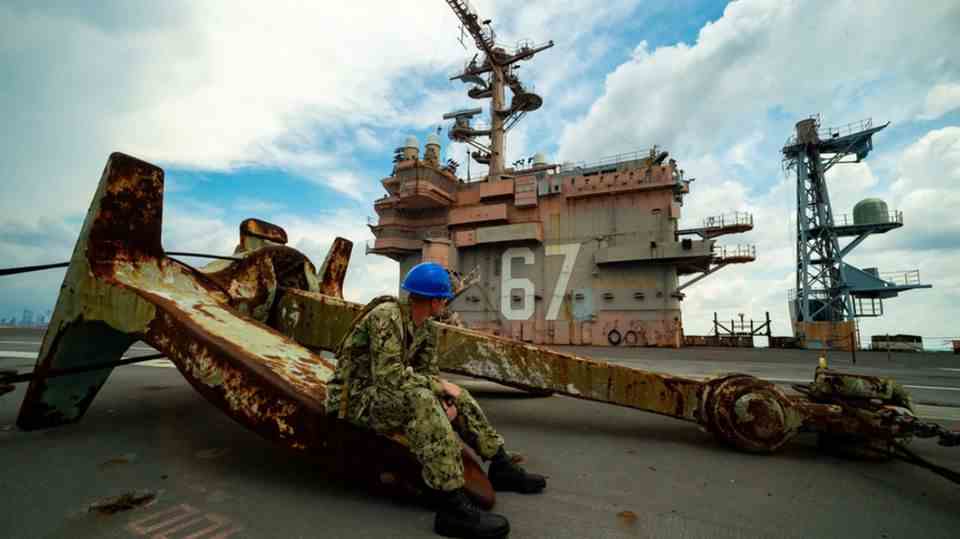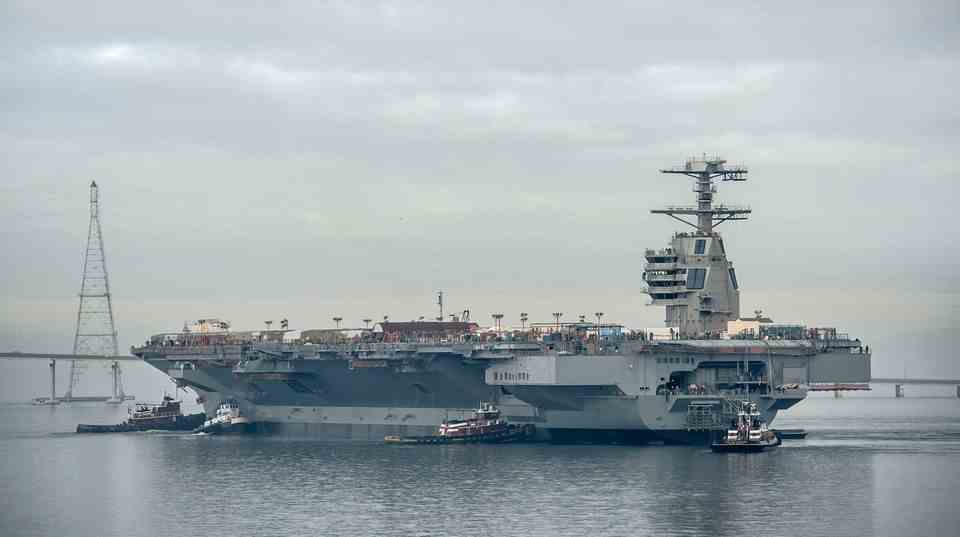upgrade
USS Gerald R. Ford – the most powerful (and most expensive) aircraft carrier in the world put to sea for the first time
The “USS Gerald R. Ford” is considered the most powerful ship in the world.
©US Navy/Commons
13 billion US dollars for a ship, after long delays, the “USS Gerald R. Ford” set sail for its first mission. In the Atlantic she practices cooperation with the escort ships of her strike group.
The history of the “USS Gerald R. Ford” reads like a succession of bankruptcies, bad luck and breakdowns. But now the carrier – namesake and first model of a new ship class – has set out on its first mission. This is a pure training mission in the Atlantic. The USS Gerald R. Ford is the new flagship of Carrier Strike Group 12, which operates as part of the US 2nd Fleet.
The deployment is intended to provide the commander and crew with “a chance to test the aircraft carrier’s airworthiness before it begins its first Global Force Management deployment next year,” according to the commander of the US 2nd Fleet. “This historic deployment in service is an opportunity for the US Navy to join other members of the NATO alliance for joint training in the Atlantic while testing the advanced technologies of the first new class of US aircraft carriers in 40 years.” The carrier’s strike group includes 17 ships and one submarine. These include a Ticonderoga-class guided missile cruiser and three Arleigh Burke-class guided missile destroyers. All eight air squadrons are on board the carrier, although not at full strength.
Huge leap in technology
The USS Gerald R. Ford represents the greatest advance in carrier construction in 40 years. The extensive innovations then also led to long delays and massive price increases. Despite the purchase price of 13 billion US dollars, the carrier should be comparatively inexpensive. Over the entire lifetime, the labor costs of the crew are the largest cost factor and this has been significantly reduced. In addition to a completely new type of radar, the carrier heralds a new era in two fundamental technologies.
The huge elevators that lift the jets onto the deck have been converted to electromagnetic technology. And then the catapults that bring the jets to take-off speed were also switched. Previously, the US carriers worked with steam catapults. Water vapor is stored under pressure and, once released, powers the sleds of the catapults. This technology is personnel and maintenance-intensive and requires a lot of space on board. The new catapults use an electromagnetic pulse. This works without the potentially dangerous hot water vapor.
Numerous glitches
There were numerous mishaps during the construction of the carrier. Some were odd. For example, that it was not considered that the crew does not go to the toilet evenly throughout the day, but that the load is much greater at peak times in the morning after meals (“Price shock – flushing the toilet costs $400,000 once”). More importantly, it took years to get to grips with the intricacies of electromagnetic technology. These problems caused former US President Trump to throw a legendary tantrum (“Back to the ‘goddamn’ steam engine”). Now they have been fixed, without lifts and catapults the “USS Gerald R. Ford” would not be operational.
Now the US Navy is suspicious of China. In the west it is assumed that Beijing’s new aircraft carrier will also use catapults. This carrier detaches itself from the model from the USSR and is supposed to skip the steam technology and start immediately in the electromagnetic age. Should the Chinese succeed in implementing this technology without major difficulties, it would be an embarrassment for the US Navy, which was struggling so much. And also a bad omen for the arms technology race between the USA and China.




